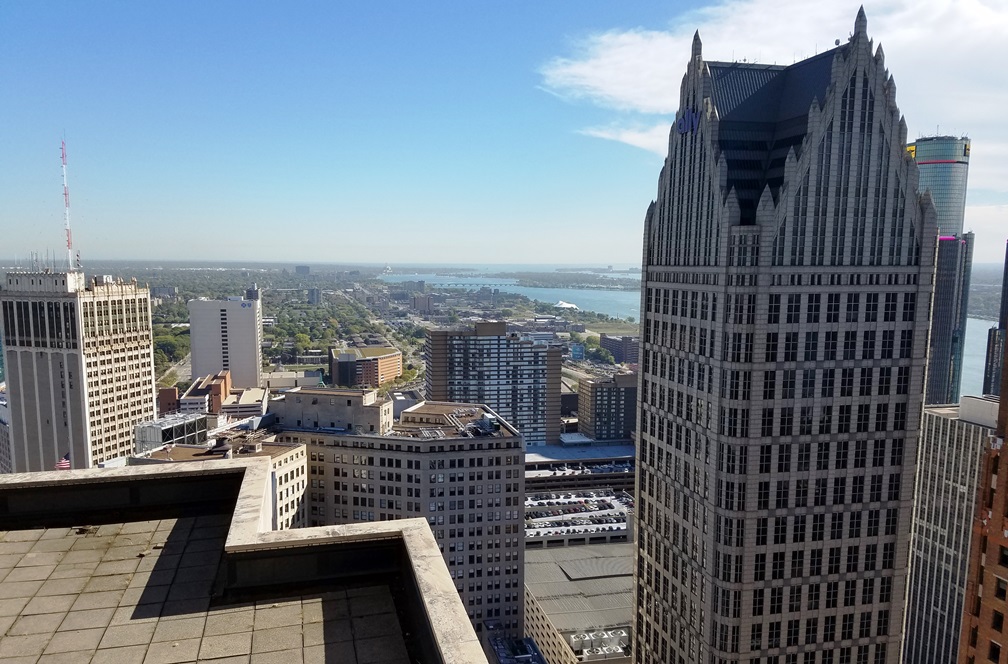Long-term REVITALIZATION readers will no doubt have noticed that virtually all of the revitalization success stories coming out of Detroit have been in the Downtown or Midtown. This has led to accusations that Mayor Mike Duggan‘s administration has been managing the city’s comeback as if there were actually two cities: the Downtown/Midtown area (where most of the white-collar jobs are) amd all the rest of the still struggling neighborhoods (largely minority).
Mayor Duggan has denied this, and a report from the Urban Institute lends credence to both arguments. It found that tax breaks and other redevelopment incentives do, in fact, favor the Downtown/Midtown.
On the other hand, Brett Theodos, the lead author of the report, says there’s a good reason for the discrepancy. Private investment and tax subsidies follow jobs. And they’re clustered in downtown and Midtown, particularly white-collar ones.
“If you look at the amount of investment per job per neighborhood, it doesn’t look like downtown is getting outsized levels of investment. That’s the one hand,” Theodos said. “On the other hand, jobs are not equally located across the city .. and Detroit is especially sprawling. There’s a stark divide between who is working downtown and who is working in neighborhoods.”
Another way of looking at the situation is from a strategic perspective. One of the simplest but most successful revitalization strategies is “strengthen and replicate what works.” In other words, find the places and activities that are already improving one’s community, and build on them.
No city, especially Detroit, has unlimited resources for renewal, so strengthening the few parts of the city that are already attracting jobs and investment often makes more sense than a needs-based approach that spreads that dilutes the effect of the funding by spreading it too thinly over areas that have little or no regenerative momentum to build on.
That said, there are plenty of examples of successful neighborhood renewal initiatives outside the Downtown/Midtown area that are worthy of support. While they might now makes sense as a primary focus, they should definitely be on the government’s revitalization radar so they can be added to the support pipeline at the appropriate time. There’s evidence to suggest that that radar hasn’t really extended mugh beyond Downtown/Midtown.
Mayor Duggan points to the investment the city has made in demolishing over 11,000 dilapidated houses in those neighborhoods. But, as documented here, demolition is not revitalization. In some cases, it can be a necessary precursor to revitalization, but—by itself—it often amounts to little more than a repeat of the “Urban Renewal” disaster of the 50s and 60s.
Too many places have a naive blind faith that the free market will automatically fill in blank spaces in a city, so they demolish without creating a revitalization program to stimulate the next step after demolition. The result, as seen in hundreds of cities around the nation, is huge dead spaces—usually used as surface parking—still sitting there 60 years later.
REPORT ABSTRACT: Detroit has been characterized by a declining population, increasing poverty and unemployment rates, and increasing vacancy rates. But the city has experienced modest economic growth in the job and real estate markets in recent years. Property sales, sales price per square foot, and investment and permit activity in commercial, industrial, multifamily, and institutional properties have all been increasing, yet are far from their peak. Activity in these sectors has been concentrated in the Greater Downtown area, which has hosted a disproportionate number and total dollar volume of projects relative to the number of jobs located in those areas.
Our thanks to Detroit-based subscriber and revitalization planning expert Robin Smith for pointing out this report to us!
Photo of downtown Detroit by Storm Cunningham.
See related article by Joel Kurth in BRIDGE.

